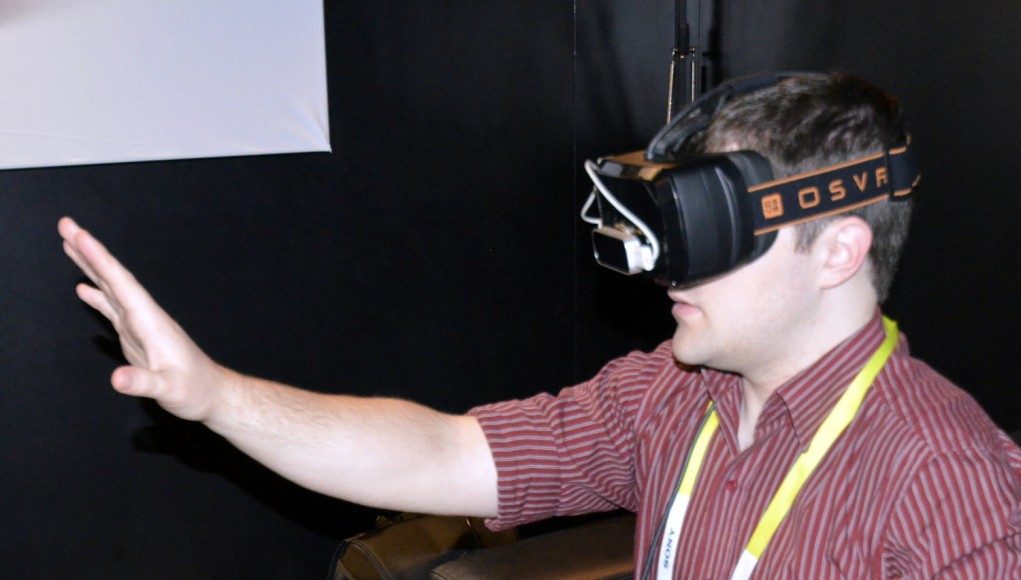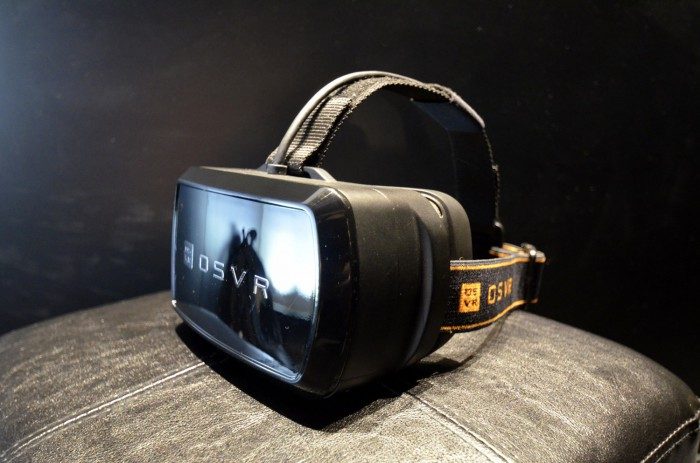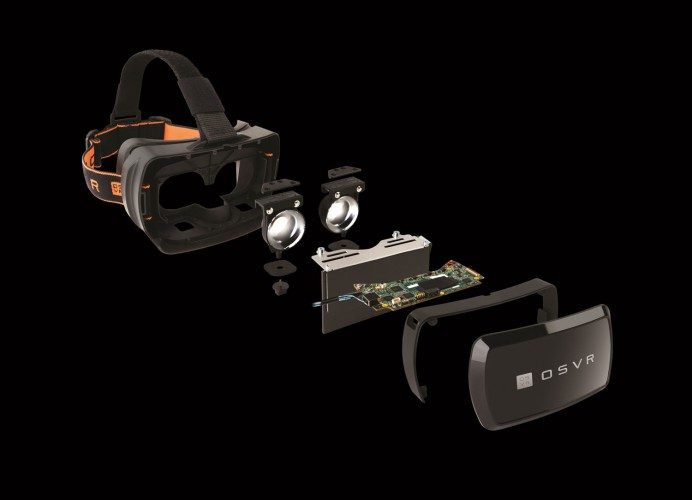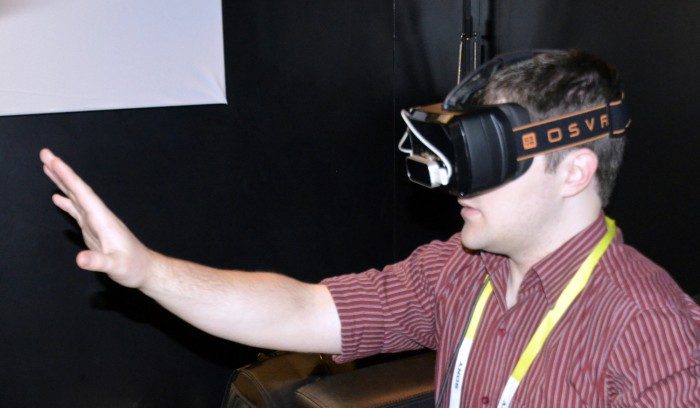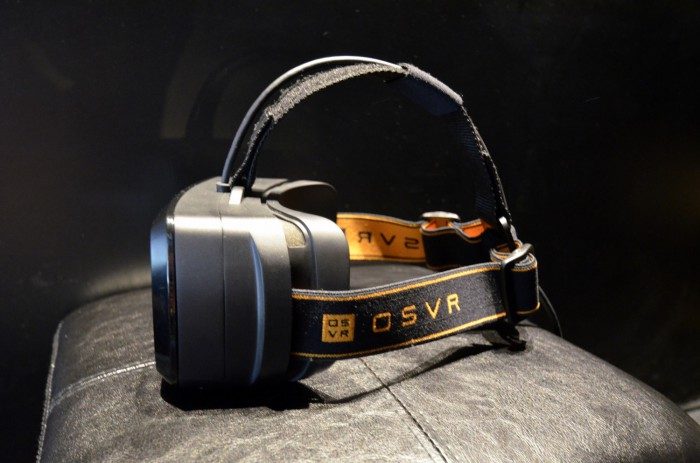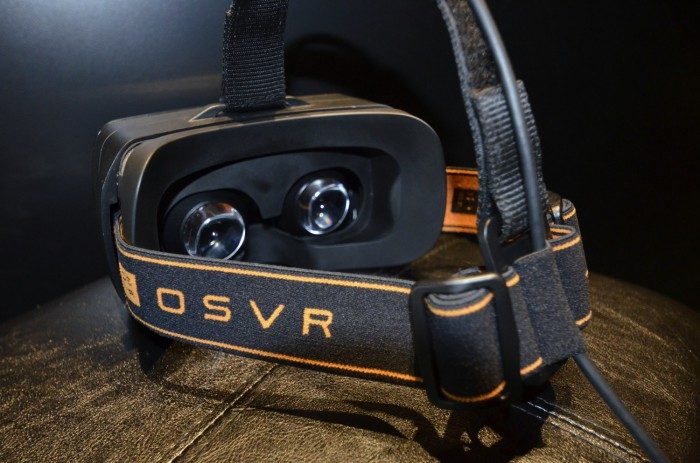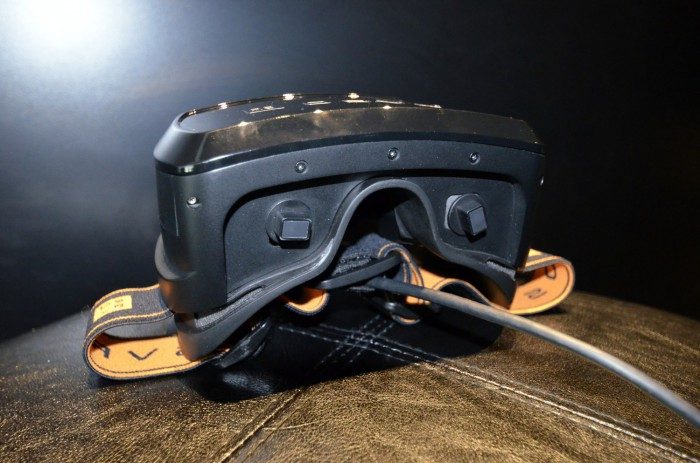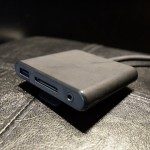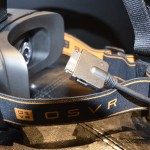After yesterday’s announcement of OSVR and the ‘Hacker Development Kit’, we met up with creators Razer and Sensics to check out the forthcoming $199 headset for ourselves.
See Also: Razer Announces $199 ‘Hacker Dev Kit’ VR Headset as Part of OSVR Initiative
Anyone that’s seen an Oculus Rift will immediately recognize the OSVR HDK VR headset. The unit is based on the same fundamental concepts: a small raster display in front of your eyes, separated by lenses that magnify and focus the image, an IMU inside for headtracking, and straps to hold it all comfortably on your head. But that’s not to say the HDK doesn’t bring unique features to the table.
For one, the unit sports independent per-eye IPD and diopter adjustments. That means that you can readily adjust the distance between the lenses (to match the distance between your eyes) and the focus of each lens, to correctly match each user’s need (or not) for corrective vision. This is something that people with glasses and outlying IPDs have been asking about for some time, but we haven’t yet seen from any of the major players, save for a linked diopter adjustment on Samsung’s Gear VR.
Second, the HDK VR headset has a two-element lens system (compared to a single lens from most others in the space) which the company says eliminates the need for pre-warping or chromatic aberration correction of the rendered scene, whereas the majority of headsets out there are using the aforementioned techniques to correct for distortions introduced by their lenses.
Before we jump into impressions, it’s important to note that this is a development kit, it’s right there in the name—Hacker Developer Kit. Furthermore, the unit we tried is a prototype of the final version which is expected to launch in June for $199. Razer says that the schematics of the HDK are open and available to all, allowing anyone to build and even sell the device, or variants thereof. In the end, they don’t think that most people will be creating their own headset for sale, but rather opt to hack the headset, making mods where they see fit. Razer, and Sensics, who collaboratively designed the headset, say that the unit is designed modulary to make modification easy. The HDK schematics can currently be requested at the OSVR website.
See Also: Oculus Open-sources Rift DK1 – Mechanical Designs, Firmware, and More All Freely Available
The OSVR HDK prototype we tried is about what you’d expect from its on-paper specs. The 1080p display offers the same pixel density of the Oculus Rift DK2, but lacks the OLED display tech that affords a number of benefits to the latter, including infinitely dark blacks, low-persistence display, and richer colors. The 90 degree diagonal field of view felt perfectly comparable to that of the DK2. The build quality felt very good for a prototype, which I suppose shouldn’t surprise us given Razer’s penchant for peripheral design.
The two-element lenses did impress. With no pre-warping or chromatic abberation correction of the rendered frames, I saw a sharp scene that didn’t have any noticeable warping or chromatic aberration, even when looking around the scene with my eyes without moving my head (which often reveals lens artifacts). Representatives from Razer and Sensics, said that rendering performance is improved by removing the need to pre-warp the image and apply chromatic abberation correction.
The headtracking, tracked with a Bosch-made IMU, left me underwhelmed when stacked up against devices in the same class, with fast movements in particular reporting seemingly inaccurate data. Given that this is a prototype of the unit that won’t ship until June, it’s reasonable to expect this to improve before launch with the refinement of sensor fusion algorithms for the IMU data, especially knowing the strides that Oculus made from a purely software standpoint with the Rift DK1’s tracking.
There’s still ergonomic and functional design work to be done before the final units are shipped in June. The current prototypes have ample openings around the lenses, allowing dust to easily get onto the screen (a big deal when we’re talking about a 5.5 inch screen magnified right in front of your eyes). Razer and Sensics assured me that the final HDK design would have a sealed lens-screen system. The strap comfort was fine, but the company rightly continues to iterate on the face-interface (where the headset actually comes in contact with your face) to increase comfort.
The ability to adjust both IPD and dioper are undeniably useful for widespread usability. Adjusting each is simple: knobs on the bottom of the HDK VR headset can slide back and forth for IPD adjustment and forward and back for diopter adjustment. Twisting the knobs allows tightening or loosening the mechanism to make the adjustments. In practice it’s difficult to make accurate adjustments just by eyeballing it. Razer and Sensics agreed that some sort of calibration sequence would likely be a good idea. They also mentioned that they were considering having the headset be able to read the IPD and diopter settings for both optimal adjustment of the rendered image and allowing the user to easily return to a known setting.
The current lack of positional tracking (the ability to move your head through 3D space) seems like a big deal, but Gear VR has demonstrated that it very much depends upon the kind of content available for the device. In the end, positional tracking is always going to be better for the VR experience than no positional tracking. Razer and Sensics are aware of the need for positional tracking and say that the open nature of the product means that anyone could decide to create and sell a positional tracking solution made for the HDK, They’ve also mentioned it’s something they may add at a later stage, suggesting that they want the market to decide what’s important for the headset.
We’re looking forward to seeing how the HDK prototype will improve for its initial launch come June, along with execution of the broader goal of OSVR—creating an open source SDK that’s compatible with a multitude of devices from VR headsets to input devices.

